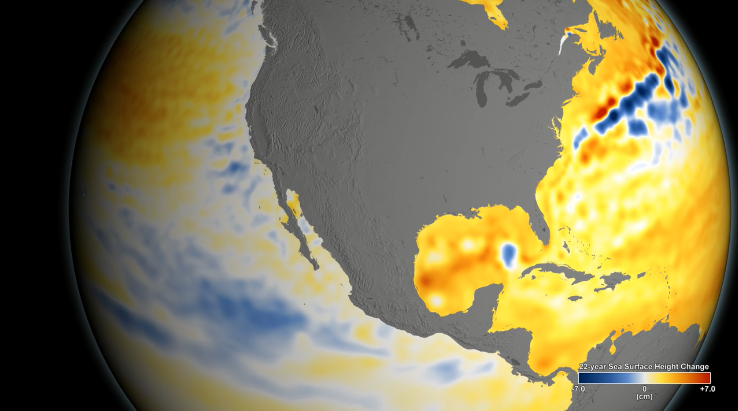Rising Seas are about to become a bigger issue for the West Coast, according to scientists.
Using satellite and other data, NASA scientists have been tracking rising sea levels around the world. They say that natural cycles in the Pacific have been masking effects of sea rise for about the last 20 years. But that’s changing.
“In the next five or ten years, I think the west coast of the United States is going to catch up,” says Josh Willis, a climate scientist at NASA’s Jet Propulsion Lab in Pasadena. He says a major ocean phase known as the Pacific Decadal Oscillation is in the midst of a big shift.
For about the past two decades, the PDO, which Willis describes as “El Niño’s bigger, slower, brother,” was “piling up” warmer water on the far side of the ocean, exacerbating sea rise there. When water warms, it expands.
“So we’ve actually seen a slight drop in sea levels off of our coastline because of the rearrangement of heat within the oceans,” Willis explains.
